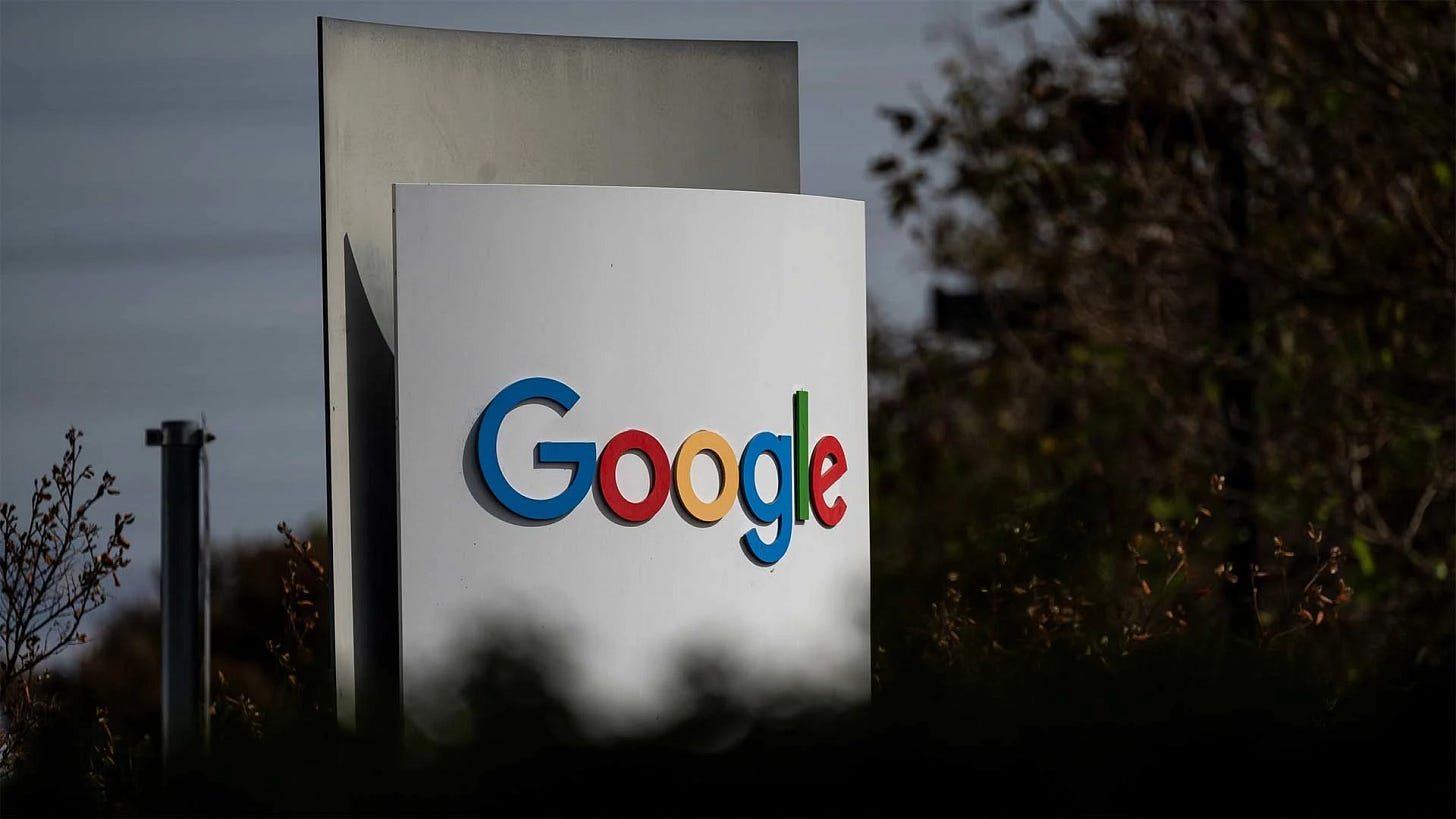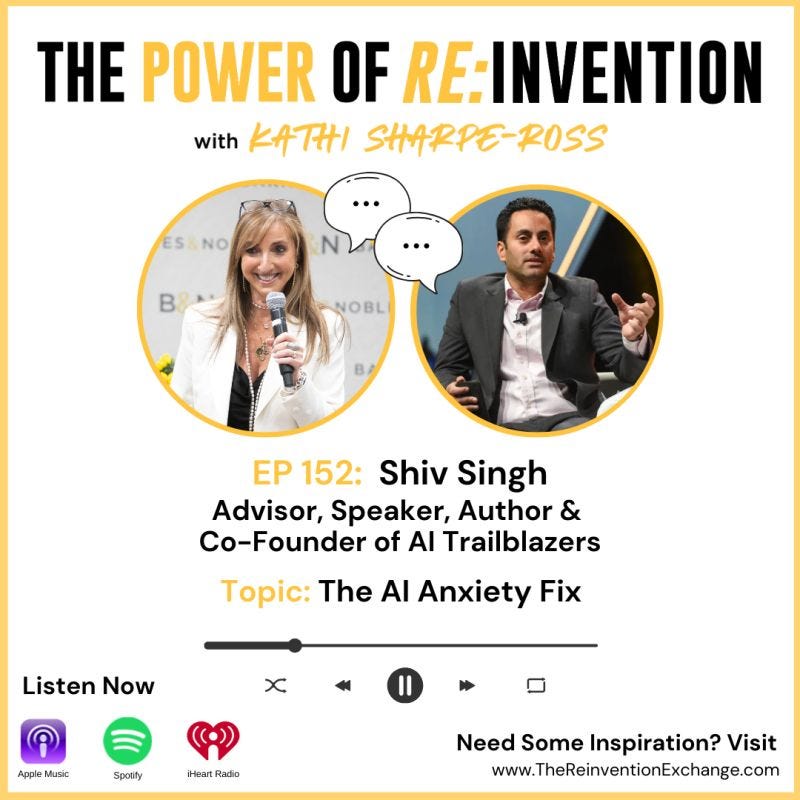AI’s Fork in the Road for Marketers
And why marketers must go AI-Native, not AI-Adjacent
Before jumping into the main article, I want to share a few quick reflections on the AI headlines that caught my eye over the last couple of weeks. They’re not just news items as they signal deeper shifts in how AI is reshaping marketing, organizations, and the economy. As someone who spends most of my time advising C-Suite leaders navigating this terrain, these stories stand out for what they reveal about where we’re headed.
Google Dodges Penalties: The ruling against tougher antitrust remedies preserves Google’s $20 billion default search deal with Apple and allows it to retain Chrome, but the real significance lies in how AI is reshaping competition. As consumers turn to generative AI assistants for discovery, the contest is moving from search dominance to visibility in the answer engines. For marketers, this signals a future where visibility depends less on SEO and more on securing presence within AI-driven frontier models that are rapidly becoming the primary gateway to consumers. The judge explicitly acknowledged this shift in deciding not to force a breakup of Google.
OpenAI’s ChatGPT‑5 launch falls flat: While OpenAI promoted the launch as transformative, users found it underwhelming, emotionally distant, and confusing. Many were also frustrated at being forced off older models they valued. The backlash led to a quick rollback of several features. The stumble highlights how rushing products to market without giving go-to-market teams time to design thoughtful rollout strategies can backfire. Companies risk eroding trust when marketing is treated as surface polish rather than a strategic discipline that blends art with science. The cracks are beginning to show, and it is clear that the AI giants in Silicon Valley must start taking marketing far more seriously.
Building spaceships or running trains? As I spend much of my time advising C-Suite leaders on preparing their organizations for the AI era, I see companies falling into two camps. Some pay lip service to AI, adopting piecemeal solutions just enough to show progress to their CEOs and boards. Others use this moment to rewire their businesses, rebuilding marketing and product functions from the ground up to be truly AI-native. The former keep the trains running on time in the short term, but the latter are building the spaceships that will win the future. Which one are you? As Accenture CEO, Julie Sweet, recently noted in a Fortune interview, if you’re in the first camp, you may be putting your career at risk.
Anthropic’s recent policy changes are significant because they quietly shift power away from users. By default, conversations will now be stored for five years and used to train Claude unless people opt out, raising privacy and consent concerns. Political restrictions have been loosened and a copyright lawsuit settled, suggesting Anthropic is prioritizing growth and legal protection over transparency and trust. It’s a painful recognition on Anthropic’s part that they need to compromise on some of their more admirable values to compete effectively with OpenAI and others.
Marketing with AI for Dummies is 11 months in and already in its third print run, with a fourth on the way. It’s now available in French, Portuguese, German, and Bulgarian, with local editions for the UK, Singapore, and Australia, and more translations are coming soon. Its success owes much to the insights that marketing, business, and technology leaders shared with me during my research. What makes the book stand out is that nearly a third of its 384 pages are dedicated to explaining the fundamentals of AI. If you don’t understand the transformative technology, you won’t be able to apply it effectively to your role, your team or your function. If you’ve read and enjoyed the book, I’d be grateful if you left a review on Amazon.
These headlines capture the volatility of the AI landscape where market power, product missteps, and shifting values all collide. But beyond the news cycle, the deeper question is how AI is transforming work itself, starting with the roles and pathways that shape careers.
The New AI Workplace: Who Wins, Who Loses
For the past two years at Savvy Matters, I’ve been tracking a shift that feels both subtle and seismic. Entry-level roles that once revolved around routine tasks such as content drafting, creative production, customer support, and data analysis are quietly disappearing, replaced by AI’s relentless efficiency. What started as a ripple now feels like a tide, reshaping not just what work gets done but who does it. This isn’t happening everywhere, but in companies that chase efficiency most aggressively, the change is both transformative and, at times, callous. AI is killing jobs even as it boosts margins. The change is real.
A recent Stanford study, drawing on ADP payroll data, confirms what many of us have seen firsthand: late-twenty-somethings in AI-exposed roles, especially in software, marketing and service functions, are experiencing employment drops of up to 13 percent compared to older peers and less automated jobs. Overall employment looks steady, which is why the shift doesn’t always show up in headline jobs numbers. But role by role, the impact is undeniable.
There is nuance, though. When AI augments human contribution, entry-level hiring holds up. But when tasks are fully automated, those jobs vanish. This isn’t technology moving on its own—it’s the result of choices leaders make about how to deploy it. As a marketing leader, that puts you at a crossroads: let the transformation be dictated by your CEO or Board, where the focus will often be on automation and cost-cutting; or take the lead yourself, shaping AI as an augmentation tool that empowers your teams to do more, deliver more, and increase impact without losing human talent.
It’s also worth noting that not every study on AI deserves equal weight. Take MIT’s much-discussed State of AI in Business 2025 “NANDA” report, which claimed that 95 percent of enterprise generative AI pilots show zero ROI. The statistic is dramatic, but the research is flimsy: just 52 interviews, limited queries, no transparent data, and a six-month ROI window that’s unrealistic for most enterprise deployments. Add the fact that it aligns neatly with that MIT group’s own product offering, and the conflicts become obvious. These aren’t minor gaps in research instead they are structural issues.
By contrast, research like Stanford’s offers sharper clarity. It also connects with what Harvard Business Review calls “experimentation gone awry”: AI isn’t failing, but many organizations are treating it as a scattershot set of pilots rather than a disciplined, scaled strategy. Meanwhile, a “shadow AI economy” is emerging, where employees adopt tools like ChatGPT informally because they’re flexible, fast, and often more effective than clunky enterprise systems.
Put together, the workforce disruption and flawed reporting underscore a critical truth: AI can drive productivity, growth, and efficiency, but only if leaders apply it with strategy and care. The real distinction is going AI-Native rather than merely AI-adjacent. Done right, it is transformative. Done poorly, it is destructive. The responsibility lies with leadership.
Here’s what going AI-Native looks like in practice:
Own the design, not the hype. Align pilots with defined business objectives. Skip vanity projects. Prioritize structured experimentation: low-cost, frequent, feedback-oriented ones and empower nimble teams to iterate and scale.
Transform the workforce. As entry-level roles evolve, invest in intentional upskilling. Enable early-career employees to transition into AI-augmented or oversight functions, instead of being forced to exit the business.
Champion adaptive systems over static tools. True gains come from horizontal enterprise, AI-first systems that learn, remember, and integrate into workflows that operate across teams. Choose AI that evolves with users, not more random tools that calcify into enterprise inertia.
Scrutinize data and claims. Sensational headlines like “95% failure” make for clicks, but rarely withstand scrutiny. Leaders must validate sources, surface real data, and avoid decisions based on research with flawed metrics. As you’re transforming be sure to listen to the right advice as there’s lots out there!
Here and in my book, I’ve argued that AI should be anchored in creating transformative business value. AI has the potential to multiply business value, but only when implemented holistically, and with intent, transparency, and empathy.
Fundamentally, real transformation doesn’t happen at headline speed. It grows in the spaces where leaders design with purpose, care for emerging talent, and treat technology as an enabler not a scapegoat. That’s what it’ll mean to be AI-Native.
Where I’ve been
It’s been an intense month balancing consulting commitments with speaking engagements on marketing transformation and AI’s role in the enterprise. I also joined Kathi Sharpe-Ross for a thought-provoking and candid podcast, where we explored AI-Anxiety, leadership, and some of the most transformative moments in my career.
Blending my two professional passions, I also recently co-hosted a wine dinner for thirty Bay Area CMOs. We featured wines from Revana Estates, whose founder graced the cover of the latest issue of Sommelier India - blind-tasted alongside selections from Château d’Issan and Yellow Tail. It made for a lively and entertaining evening! Photographs and write-ups here and here.
In the coming month, I’ll be speaking at the National Association of Corporate Directors Annual Conference and the DPAA Global Summit, along with delivering several corporate talks.
What I’m reading
The ‘shadow AI economy’ is booming (Fortune)
Why open-source AI became an national priority (VentureBeat)
What I’ve written lately
Is Search Really Going Away (August 2025)
The Myth of Creative Immunity (July 2025)
The Silent Shift in Marketing Leadership (June 2025)
AI Trailblazers Summit Highlights (June 2025)
Will the Model Remember You? (June 2025)






